What benefit can having two screens on a laptop offer you and is there anything more to this device than that? We review ASUS' newest dual-screen laptop to see if it is worth your time and money.
ASUS was one of the notably impressive brands that announced entire batches of new innovative technology in CES 2021. This Taiwan-based tech giant had quite a good year in 2020 following some unique product releases specifically in their gaming laptops as well as their high-end consumer line dedicated to creators and digital professionals. One of which was the Zenbook Duo which we reviewed here a while back.
For context and transparency, I previously used the 13-inch ASUS Zenbook Duo for over a year for professional photography work, standard productivity, and a bit of video editing. This article should serve as a quick comparison as well as an update to the review linked above as it mentioned some notable suggestions in the endnotes as well as in the comment thread. Before I go on, I want to make it clear that the local arm of the brand in my country has tapped me as one of the endorsers of this computer, but that does not in any way affect the authenticity of the opinion that I shall express in this article. This article was not in any way required or requested by the brand and I am writing this out of the intention of sharing what this device could offer to the workflow of photographers and filmmakers who read our articles.
Build and Design
The ASUS Zenbook Pro Duo 15 OLED comes in the exact same build as the first generation counterparts. If you are an owner or user of the older version (UX581) or the Zenbook Duo (UX481 or UX482) you wouldn’t find much difference in the body as it retains the Celestial Blue colorway with the circular brushed metal finish which is uniform among most ASUS laptops. 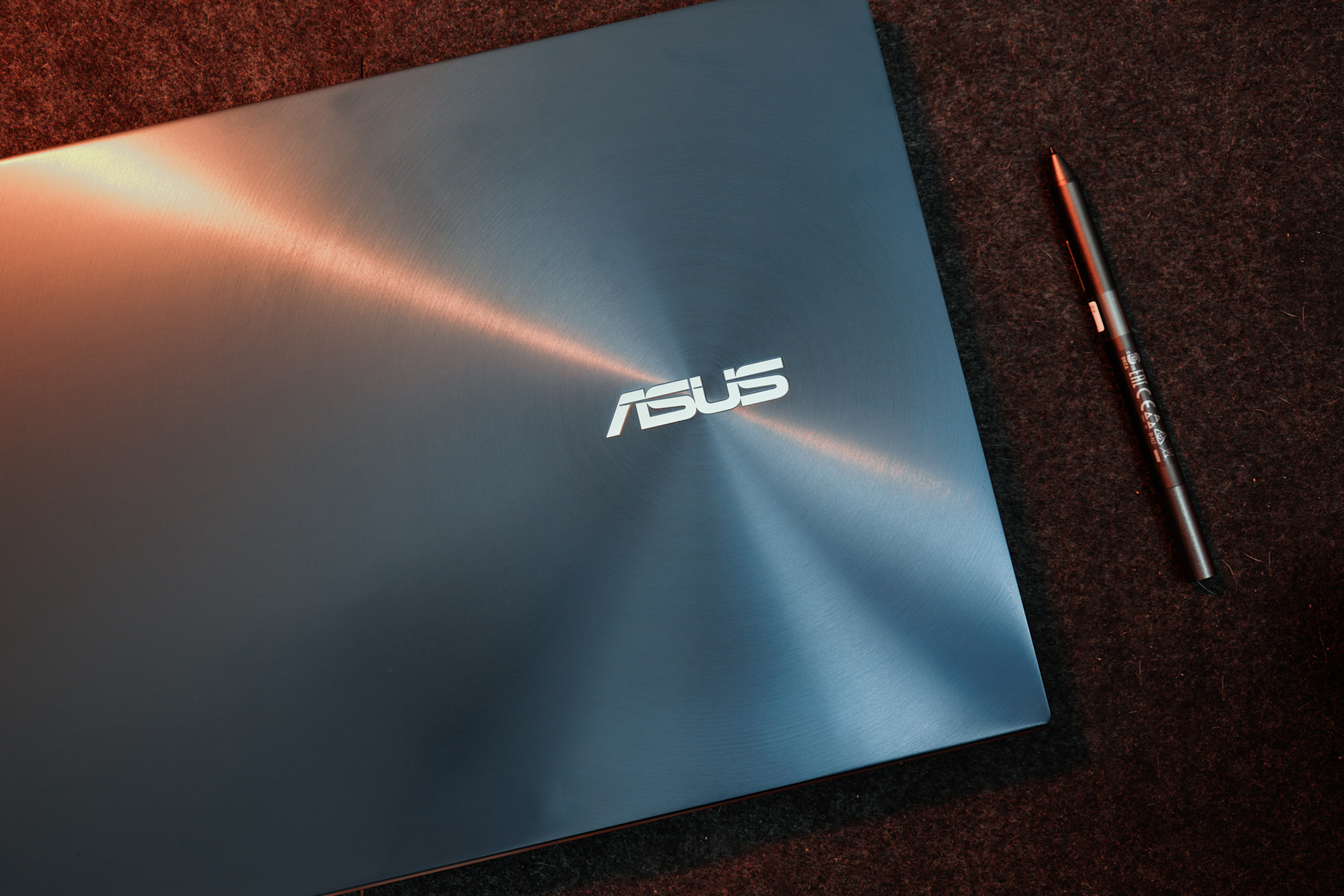
There are some notable differences in ports and consequently in terms of connectivity. The new version features two Thunderbolt 3 USB-C ports (supports display), one USB 3.2 Gen 2 type A, an HDMI 2.1 port, and a 3.5mm hybrid audio I/O port on the sides. In comparison, the older generation has two USB 3.2 Gen 2 ports and a single Thunderbolt 3 USB-C port. All 3 USB ports on the newer generation are found on the right with the 2 USB C ports about less than an inch apart right beside the trackpad which may have some ergonomic implications, especially when using an external mouse is limited desk space. This version also retains the compressed layout of the trackpad and keyboard with no wrist space on the device itself. However, there is an included wrist rest/pad that latches onto the proximal edge of the device for comfort. The layout, just like the older generations’, might be quite a challenge for left-handed users and might require them to use a separate mouse.
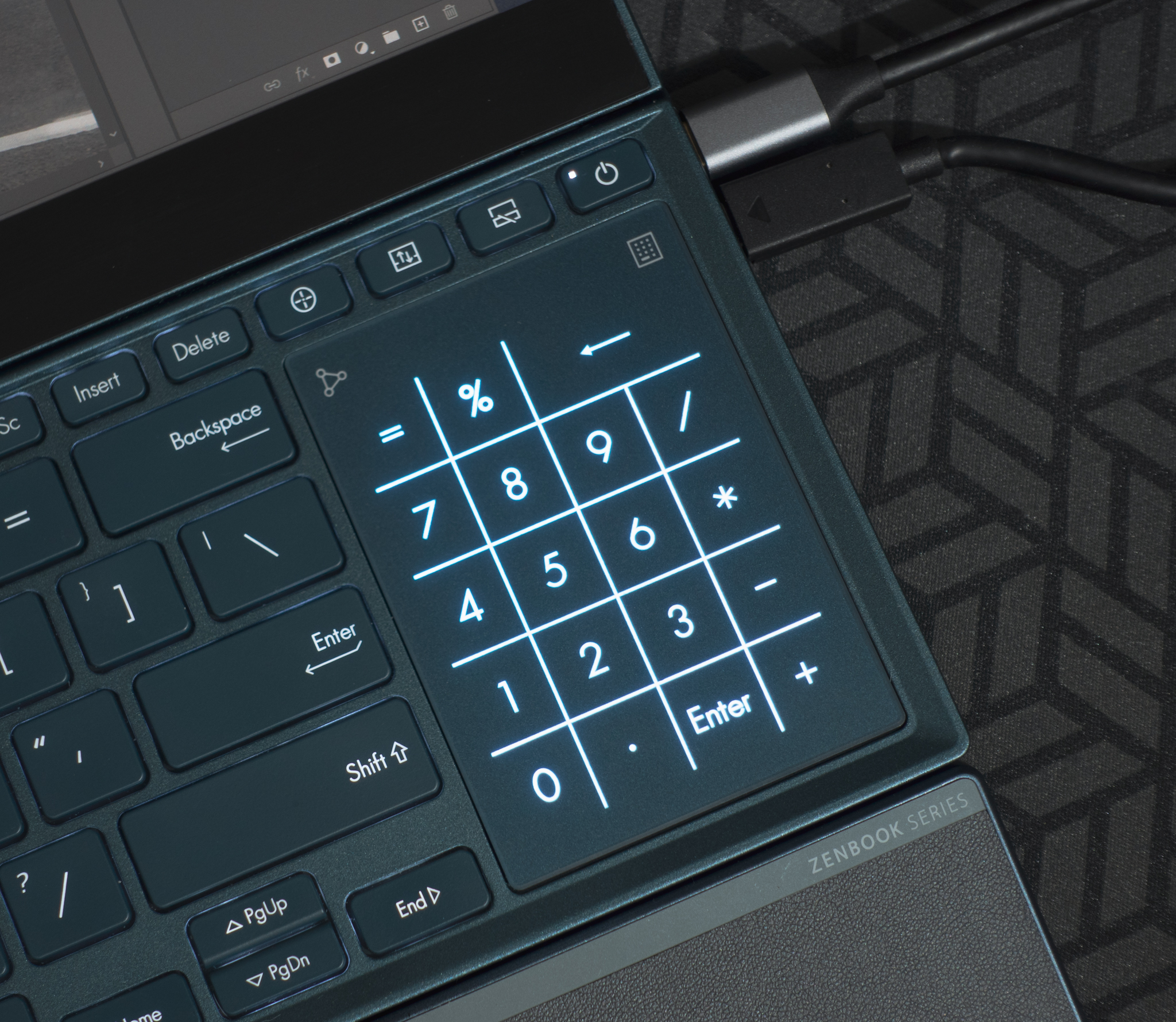
2 USB C ports on the right, trackpad with hybrid numpad, wrist pad at the bottom.
Screens
The ASUS Zenbook Pro Duo 15 OLED features a 15.6” 4K UHD OLED HDR touch display with a glass smudge-resistant surfaced screen. This display sports 100% DCI-P3 color gamut, 133% sRGB, and a Delta E <2 color accuracy in addition to PANTONE validation and TUV Rheinland eye care certification. Older versions either had a similar OLED screen (UX581) or an IPS display that had touch screen and non touch screen variants (UX481).
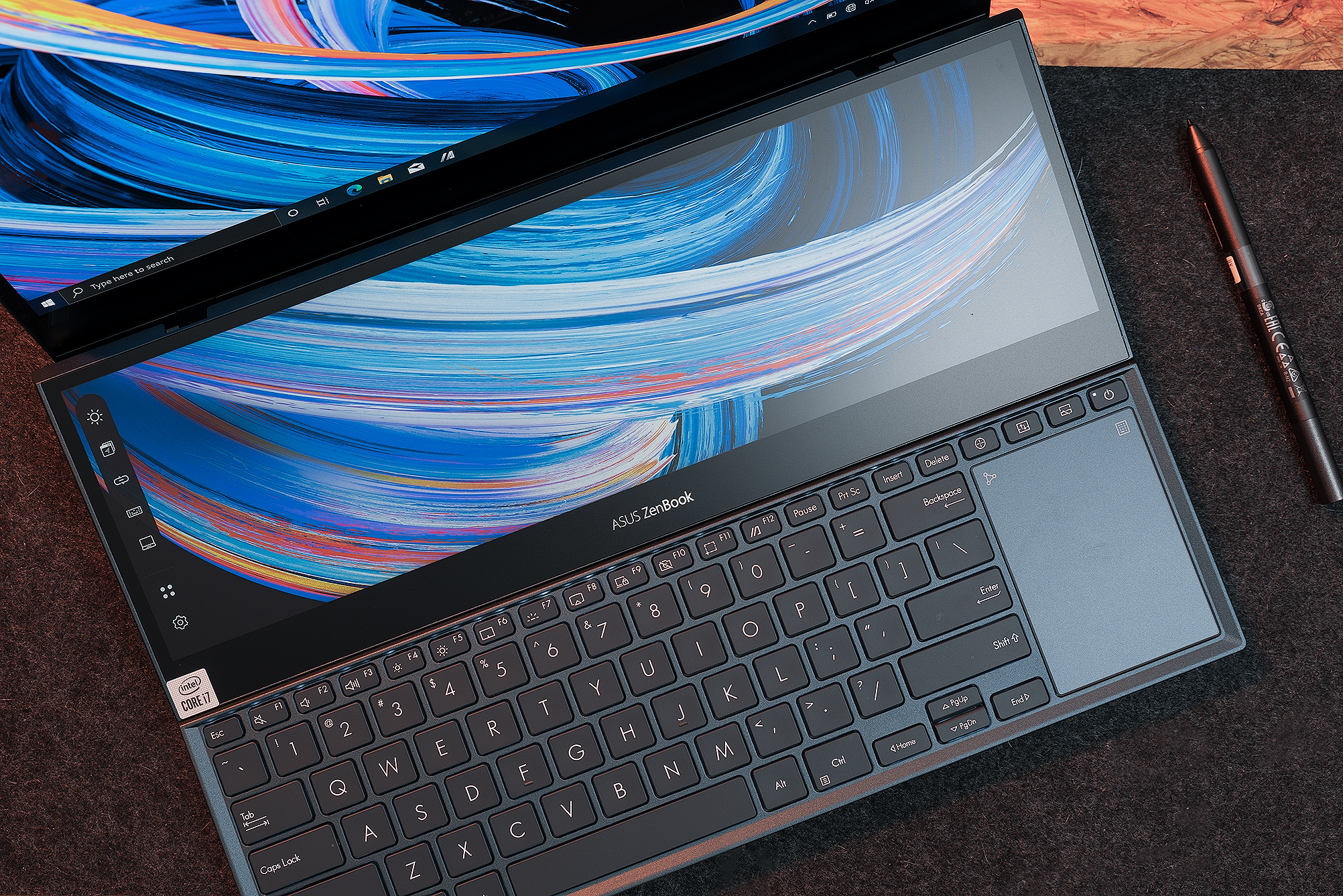
15.6" 4K HDR OLED main screen
14" 4K IPS secondary display
The secondary screen that ASUS calls the Screenpad Plus is a 14” inch 4K IPS display that is similarly touch-sensitive and compatible with the included active stylus. A noteworthy improvement on this new version is that the screen tilts up an additional 9.5° which improves the experience through a better angle of view. Conveniently, this new opened up space between the main panel and the tilted Screenpad Plus also gives additional 36% airflow that works hand in hand with the dual fans for better cooling and overall performance.
Under the Hood
Beneath the flashy dual-screen exterior is a combination of a very capable CPU and a remarkable powerhouse GPU that work alongside each other in creating a seamlessly efficient working experience for anyone who does moderate to heavy graphic processes. The brand promotes this computer as something designed for creative professionals such as photographers, filmmakers and editors, graphic artists, and everything in between. The Zenbook Pro Duo 15 OLED comes in two variants that differ only in CPU. A 2.2 GHz Intel Core i7 8-core (10th Gen) version that sells for $2799.00, and a 2.4 GHz Intel Core i9 8-core (10th Gen) version that costs an extra $220. Both versions come with a 32GB DDR4 memory and a 1TB M.2 SSD storage.
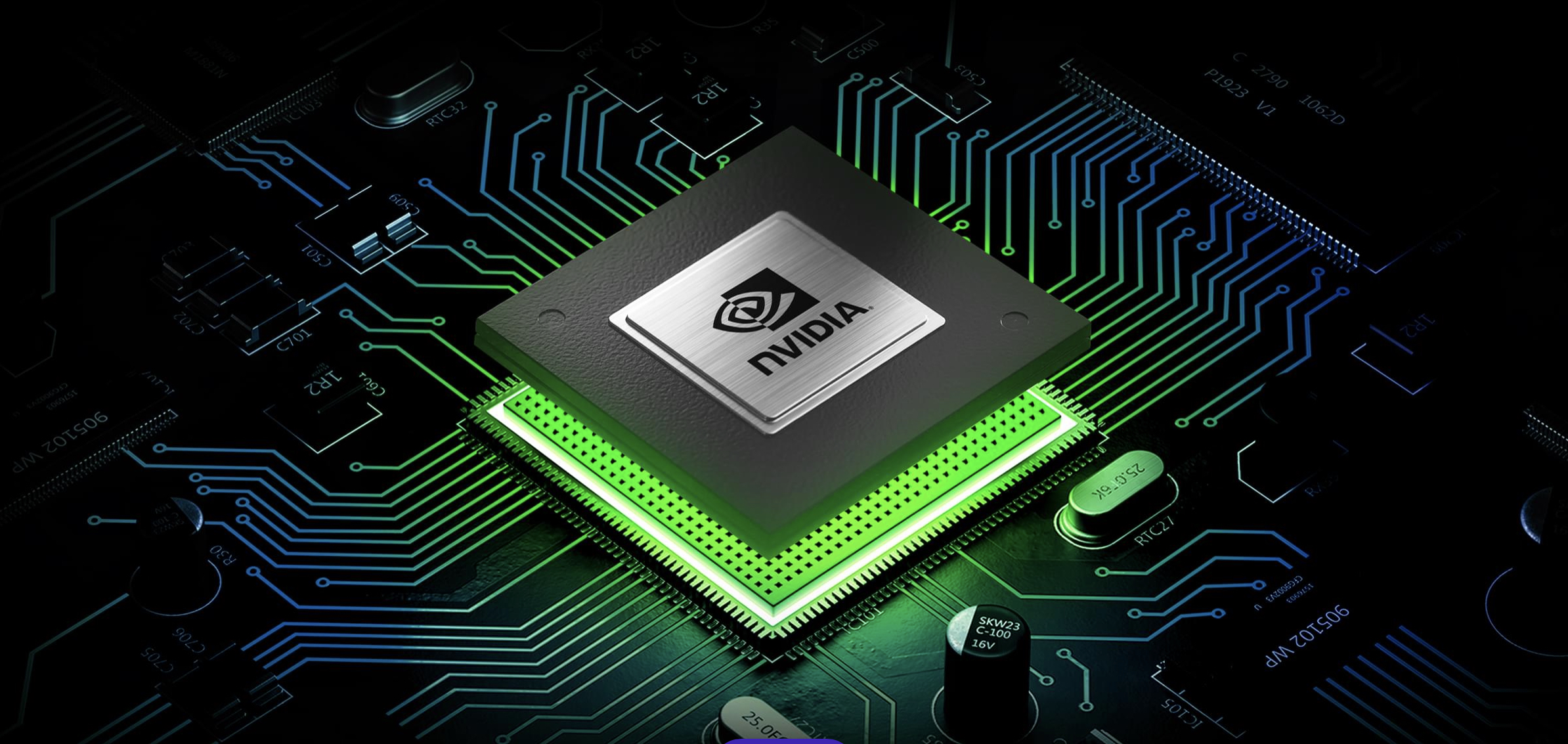
Working alongside this CPU is an ultra-capable GPU that takes over for heavy graphics work. Both variants pack an NVIDIA GeForce RTX 3070 laptop GPU with 8GB of VRAM. This makes this version of the Zenbook Pro Duo an NVIDIA Studio badged laptop as it is one of the designated models created specifically for heavy creative workflows. This GPU offers an array of accelerated functions that makes heavy photography post-processing tasks faster and lighter on the CPU through a number of GPU-accelerated functions that can be found on most editing apps including the most recent Adobe Photoshop, Premiere Pro, and Lightroom Classic versions. More on the experience later.
User Experience
Starting with what’s similar to the first generation model, having two screens on a laptop offers a lot of benefits in multi-tasking. Considering the size of each display and their resolution, the user can comfortably have 2 or 3 windows open on the secondary display and 1 or 2 windows open on the main display for multi-tasking. This comes in handy when working on documents while viewing or copying text from multiple sources. Alternatively, the user could be editing or writing on one display while watching a video on the other display. Lastly, of course, each window can be expanded and extended into the secondary display so that the application can take up the entire 2 screens if the user prefers.
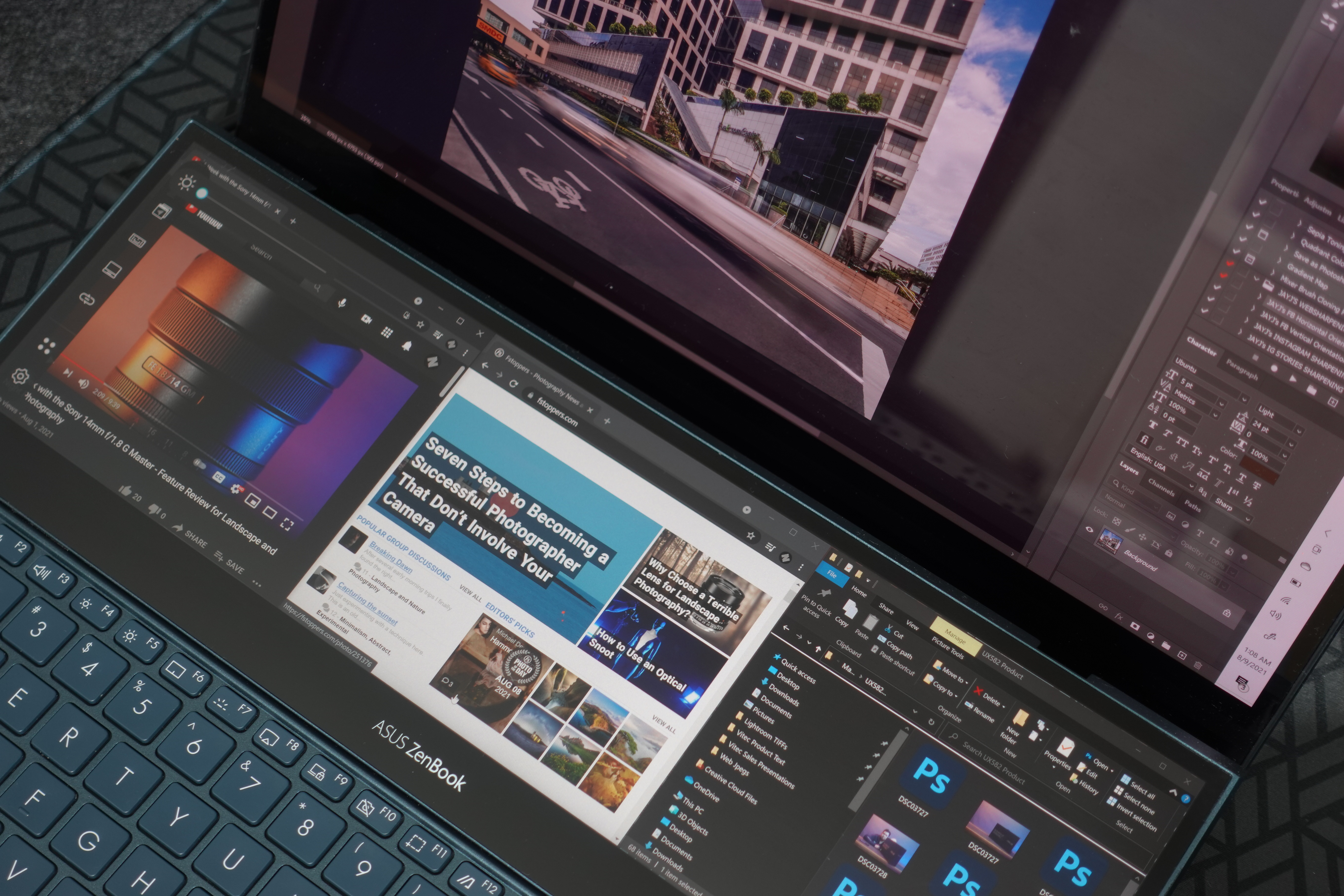
3 open windows on the secondary display
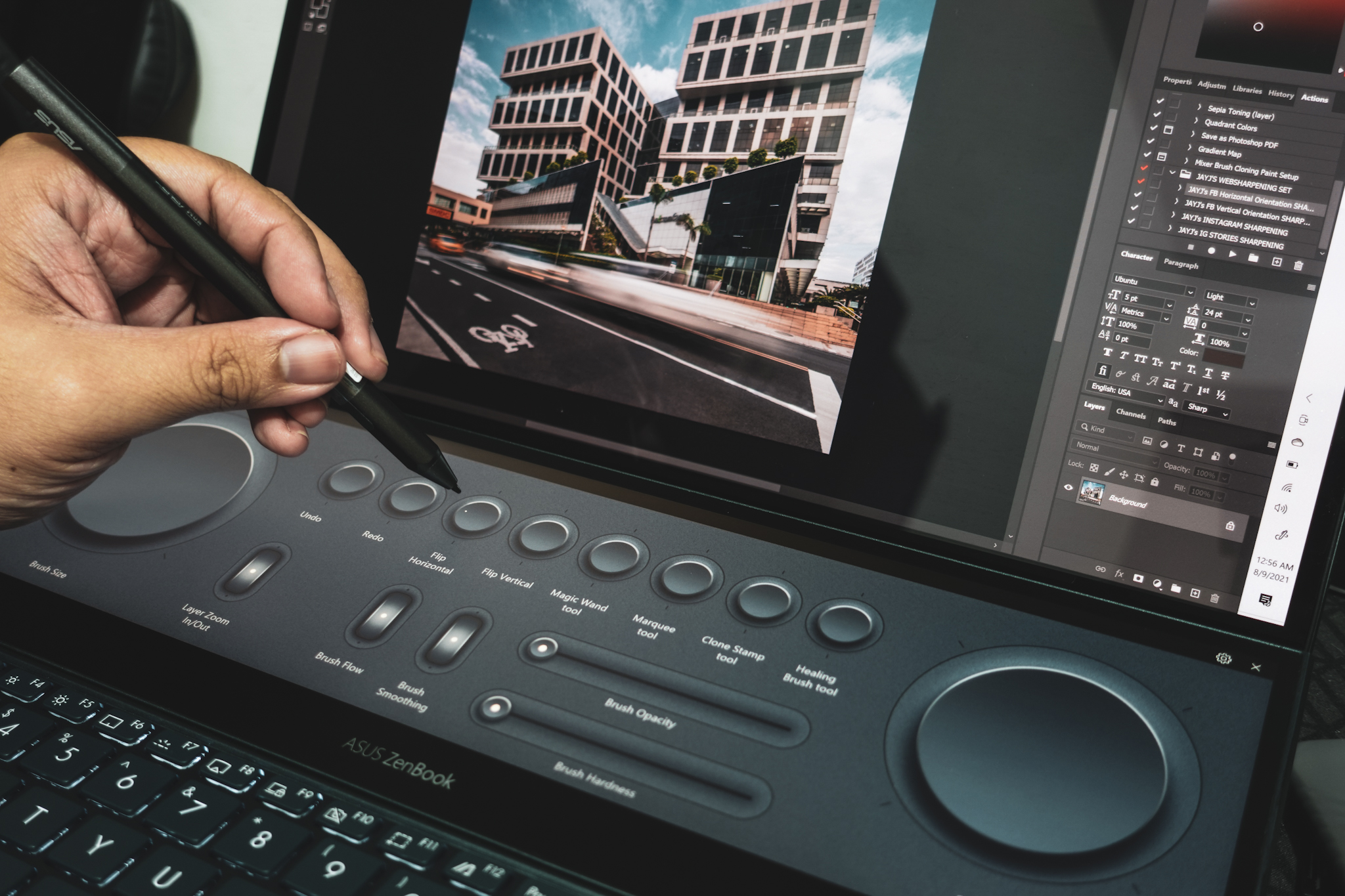
Adobe Control Center on secondary screen
It is also a very convenient fact that both screens are touch-responsive and more importantly, compatible with the included stylus. This way, manual local edits can be done with as much or maybe even more precision than you would have with a graphic tablet. Being able to use the pen directly on the screen gives way for more precise movements when using brushes on Photoshop or any other tool that requires drawing or tracing. The screenpad plus also offers a touchpad mode where the entire secondary screen turns into a touchpad. However, the touchpad mode hasn’t been made compatible with the pen yet. That would pretty much turn it into a built-in graphic tablet right there.

Perhaps the most remarkable point about the experience of using this computer is the efficiency of the system altogether. From a photographer’s perspective, I personally thought that a GPU wasn’t important in the editing workflow. At least not as crucial as it is in editing videos or gaming. However, it was such a pleasure to learn and experience what GPU acceleration actually does to photo editing. For one, as I am mainly an Adobe Lightroom user, sorting through and inspecting my catalog is seamless and without delay. I tend to pixel-peep my raw images which used to take significant time to load in other laptops. Another handy function on Lightroom is the AI Enhance Details function that runs a specific algorithm to clean up and sharpen the images for even better details.
On Adobe Photoshop, various seemingly simple functions are also apparently GPU accelerated. Personally, my most used tool is the spot healing tool for taking out unwanted objects or artifacts in the details of my images. With a slower computer, it would take time and often miss on sampling another area to fill the removed patch correctly. This is the same way with the clone stamp, content-aware fill, and over 30 other functions that now take less time and are done more precisely.
On a bigger scale, the GPU also does wonders in making complex processes faster and quicker. When shooting landscapes and cityscapes the most common graphics-heavy task I can think of is putting together large panoramas with several hundred megapixels. A process that used to take somewhere between 10-30 minutes on a non-GPU loaded laptop now takes as quickly as 2-3 minutes when the Zenbook Pro Duo is on performance mode. At the same time, the power of such a capable GPU paired with newer AI functions such as Adobe’s sky replacement module or the new neural filters functions result in a more efficient and precise editing process.
Other processes I’ve done on the laptop are assembling 360 panoramas from a full frame mirrorless camera on PTGUI as well as rendering edited videos (though my workflow on this is rather simple) on Davinci Resolve which has all resulted in significantly quicker rendering times.
Overall, this laptop has a lot to offer for photographers, specifically those who have more complex editing workflows, or those who do tasks beyond just raw image conversion and global editing. At the same time, this laptop would be expected to do outstandingly in video editing, graphic design, and digital art, as well as 3D illustration and animation. digital art, as well as 3D illustration and animation.
What I Liked:
- Great multitasking features
- Full touch screen color-accurate display
- Active stylus compatibility
- Great overall performance
What Can Be Improved:
- USB port placement might get in the way of using a mouse in limited space
- No memory card slot (preferably at least a full-sized SD)
- Stylus compatibility when secondary screen is on trackpad mode (for a graphic tablet function)
- Trackpad and keyboard layout might be difficult for left-handed users
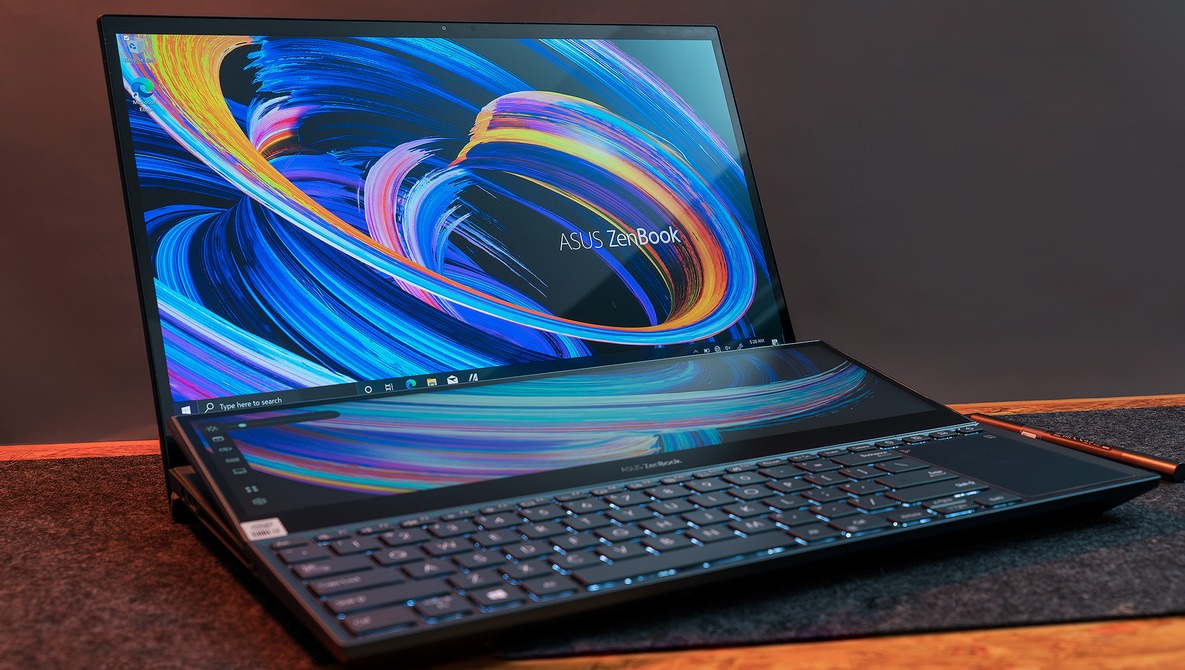






1st thing I noticed on mine was the horrid Thunderbolt/USBC placement. A cable with a right angle plug fixed that but it shouldn't have to. It's essentially a portable workstation anyway. The ports should have been toward the back. The control panel for Lightroom is handy for basic tasks but my Loupedeck CT is way more powerful. Personally I have Lightroom set up to throw the thumbnails to the secondary screen, which gives a lot more working space in develop for the main image. It's a good place to be when you don't have a larger monitor in front of you. The power brick has also shrunk from the UX581.
The most outstanding thing on the UX582 and the older UX581 are the screens. The main screens colour accuracy out of the box is incredible. This thing has the closest thing to a plug and play machine to my Epson large format printer I've ever used. The PA329 monitor is the same. If you want to work in a colour aware environment the current Asus Pro stuff is fantastic. I did a calibration just to see if there was much difference and basically there's no visual difference to the factory calibration. I've owned a lot of more expensive laptops that weren't half as good.
Good to see similar opinions! Hope youre enjoying your laptop!